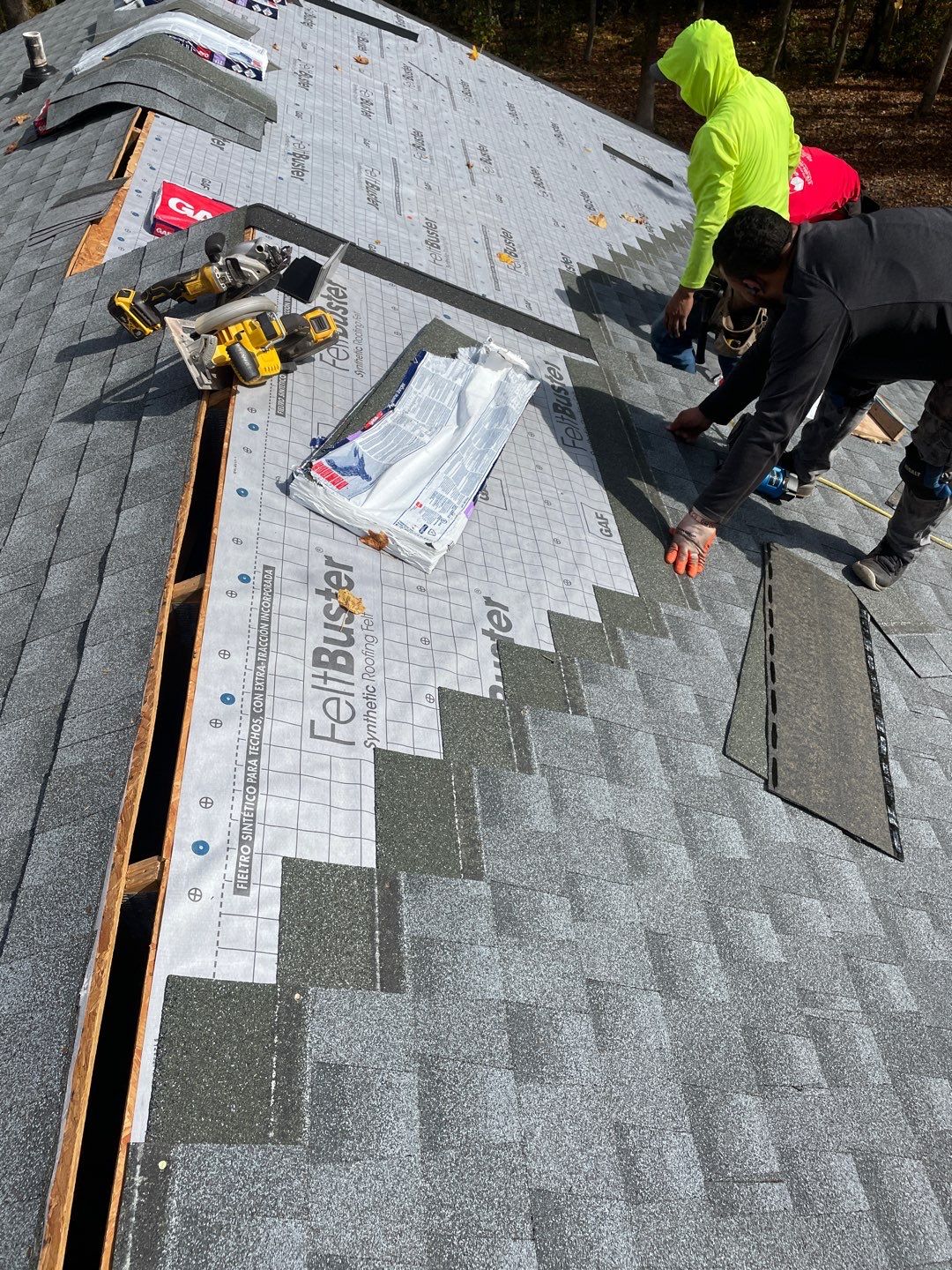Individual Reviews on the very best Gainesville FL Roofing Companies Offered
Finest Practices for Ensuring Appropriate Roof Air Flow
Guaranteeing correct roofing ventilation is important for the longevity and efficiency of a roof. A well balanced consumption and exhaust vent proportion, commonly 1:300, plays a critical role, with intake vents ideally put at the reduced side of the roof for trendy air access and exhaust vents at the peak for cozy air departure. Routine assessments to identify blockages and preserve clear air flow are vital. In addition, maintaining insulation far from vents is crucial to avoid airflow limitation. Recognizing these foundational aspects establishes the phase for more detailed understandings into installment and upkeep practices that can considerably boost your roof's efficiency.
Understand Ventilation Essentials
Correctly comprehending air flow fundamentals is crucial for making sure the longevity and efficiency of roof. Reliable ventilation alleviates wetness buildup and temperature extremes in the attic, both of which can bring about significant structural damages in time. A well-ventilated roofing system aids in preventing usual concerns such as mold and mildew development, timber rot, and ice dams, which can compromise the integrity of the roofing materials and the underlying frameworks.
The key objective of air flow is to assist in the activity of air, permitting a regular exchange between the interior and exterior settings. This equilibrium is accomplished through a combination of intake and exhaust vents that interact to preserve optimal airflow. Intake vents, typically located along the eaves or soffits, enable fresh air to get in the attic room room, while exhaust vents, commonly located at or near the roofing ridge, enable warm, humid air to run away.
Secret variables affecting the effectiveness of roof covering ventilation consist of appropriate placement, ample sizing, and making sure that both intake and exhaust vents are unobstructed. Normal assessment and upkeep are critical to identify possible blockages, damage, or inefficiencies in the ventilation system, consequently safeguarding the roof's performance and longevity.
Kinds of Roof Vents
Roofing system vents play an important role in preserving reliable attic ventilation and, by expansion, the general health of the roof system. Numerous kinds of roof covering vents are offered, each with unique advantages customized to details roof demands.

Soffit vents are installed under the eaves and operate in tandem with roof vents to guarantee a well balanced intake and exhaust system. By enabling cooler air to go into from below, soffit vents assist in the expulsion of hot air through top vents. Gable vents, located on the outside wall surfaces of the attic, deal one more efficient option, particularly in homes with saddleback roofs.
Analyze Your Present Ventilation

Following, consider the age and condition of your roofing materials and air flow elements. Older systems might not adhere to present building ordinance or might have weakened gradually, reducing their effectiveness. Conduct a comprehensive examination to identify any type of signs of damage, such as rust, damage, or voids that might jeopardize the system's efficiency.
Additionally, gauge the attic temperature and humidity levels. Heats and humidity can show poor air flow - roofing companies gainesville florida. Utilize a hygrometer and thermostat this content to get exact analyses, comparing them with outside conditions. Consistent disparities suggest prospective issues that need resolving.
Setup Best Practices
Reliable installation of roof air flow systems is vital for ensuring optimal performance and durability. Correct installation starts with understanding the particular air flow requirements of the building and the roof it covers. This entails computing the right proportion of consumption to wear down vents, generally sticking to the 1:300 policy, which stipulates one square foot of air flow for every 300 square feet of attic flooring area.

Intake vents need to be installed at the roof covering's lower side, typically in the soffits, to allow trendy air to get in. Exhaust vents, on the various other hand, must be set up near or at the roofing system's peak to promote the leave of warm, damp air.
Seal all air vent links carefully to avoid air leakages and potential water infiltration. Usage high-grade materials and follow maker guidelines to make sure longevity and effectiveness. Additionally, incorporating ridge vents with baffles can considerably enhance air movement performance by protecting against wind-driven rainfall and snow from getting in the attic room.
Eventually, accurate installation of roofing ventilation systems reduces potential concerns such as mold growth, ice dams, and architectural damages, making certain the roof's integrity and the building's overall wellness.
Normal Maintenance Tips
Uniformity in upkeep techniques is essential to ensuring the lasting efficiency of roof ventilation systems. During these inspections, ensure that vents are cost-free of debris, nests, and other blockages that might hamper air movement.
Utilize a soft brush or a vacuum to get rid of dust and debris from intake and exhaust vents. Be cautious not to harm the vent screens or louvers during the procedure.
Proper insulation is just as essential. Ensure that attic insulation does not block the vents, as this can significantly limit air movement. Reposition or change it to keep a reliable obstacle. if any type of insulation has shifted or worked out.
Lastly, replace any kind of damaged or missing out on parts quickly. Broken vents, fractured shingles, or deteriorated flashing can all add to insufficient air flow and should be addressed right away. Normal upkeep ensures that the roof covering ventilation system functions ideally, consequently extending the life-span of the roofing itself.
Verdict
Ensuring proper roof covering air flow is critical read this for keeping the performance and sturdiness of a roof covering system. Adherence to the 1:300 intake and exhaust vent ratio, paired with the strategic placement of vents, is essential.
A balanced intake and exhaust air vent ratio, generally 1:300, plays an essential duty, with intake vents ideally placed at the lower side of the roofing system for trendy air access and exhaust vents at the peak for warm air leave. Intake vents, generally situated along the soffits or eaves, permit fresh air to get in the attic room space, while exhaust vents, often situated at or near the roofing ridge, allow hot, humid air to escape.
Soffit vents are set up under the eaves and work in tandem with roofing system vents to guarantee a well balanced intake and exhaust system. By enabling cooler air to get in from below, soffit vents help with the expulsion of warm air through upper vents. Adherence to the 1:300 consumption and exhaust air vent ratio, combined with the critical positioning of vents, is essential.